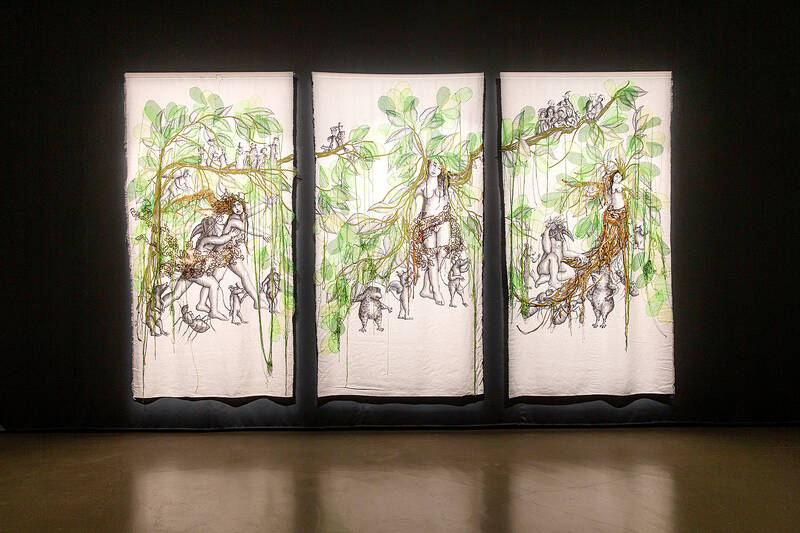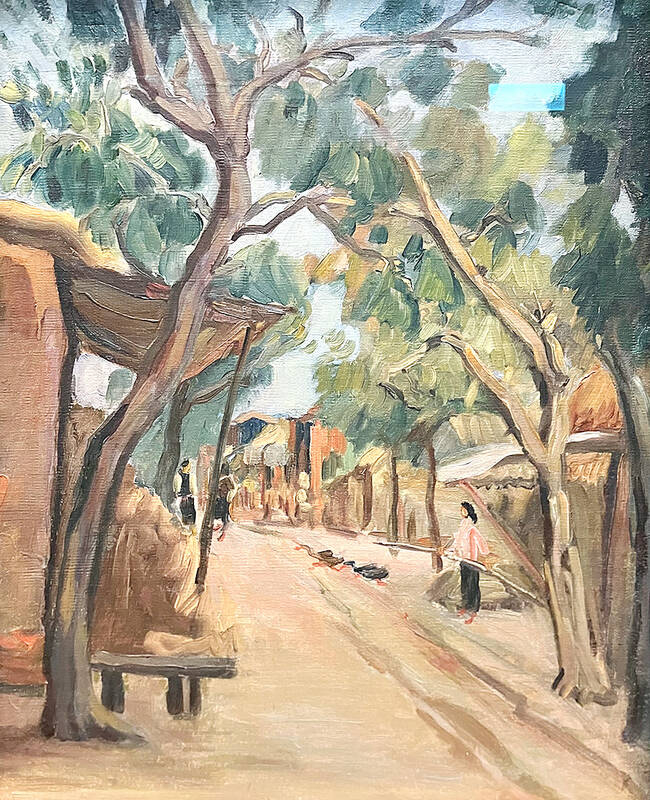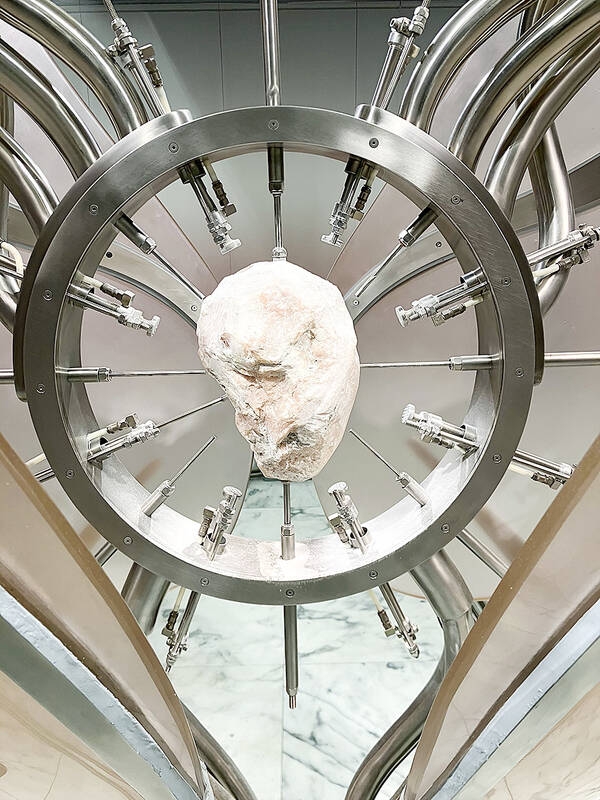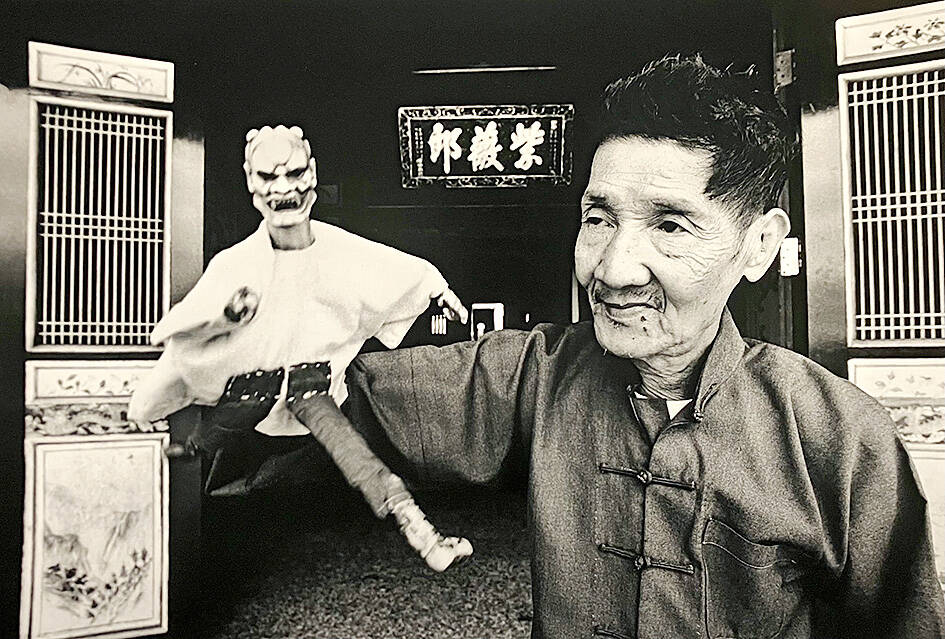Since the 1990s, biennials of contemporary art have proliferated around the world like Starbucks. They are a sort of global franchise, but based on an adaptive model and ostensibly without central control. Host cities and museums in places like Taipei or Gwangju or Sharjah see them as necessary for participating in a sort of international order of the artworld. But that order is still dominated by Western metropoles like Berlin, New York and London. So the question remains, how local can and should biennials be?
This debate in the early years of the Taipei Biennial focused on the nationality of curators as a measure of Taiwan’s agency. From the first international Taipei Biennial of 1998, most Taipei Biennial curators have come from major Western institutions. From 2000, a system emerged in which Taiwanese co-curators were paired with more famous Western counterparts.
The practical issue was artworld power, which both grants access to the world’s top art talent and draws the attention of international journals and critics. Taiwan has so far lacked sufficient curatorial starpower, and in recent years, as the Taipei Biennial has matured, the debate over national agency has become less urgent. The Taipei Fine Arts Museum (TFAM) and the local arts community has perhaps correctly become more concerned with finding curators that can simply mount an exhibition that can walk the tightrope of being “good” for both local audiences and international experts.

For the 14th Taipei Biennial, which opened last Saturday at TFAM, the curators are Sam Bardaouil and Till Fellrath, co-directors of the Hamburger Bahnhof — National Gallery of Contemporary Art in Berlin.
HORIZONTAL/VERTICAL
They chose to create an exhibition that, as Bardaouil described at last Friday’s opening, is not only a horizontal selection of contemporary artists from different geographies, but also a vertical selection that reaches back into TFAM’s collection to produce a dialogue with Taiwan’s art history.

Photos courtesy of TFAM
In the curator’s statement, the duo describe an intention to evoke “Taiwan’s layered history — marked by colonial rule, shifting identities and political transformation.”
As one meanders through the galleries, archive works are constantly popping up like Facebook memories, historical snapshots that trace Taiwan’s evolution into modernity. The arc goes from the Japanese colonial era to the new “Chinese identity” imposed by the Chinese Nationalist Party (KMT) government after 1949 and then on to the gradual emergence of “Taiwanese identity” since the 1980s.
In all, the biennial features 150 works by 72 artists from 37 cities. More than a third of these artists are Taiwanese, and at least 20 can be considered as “historical artists” represented by pieces from the museum’s archive.

Photo: David Frazier
The other artists in the exhibition are international — from France, Thailand, Korea, Saudi Arabia, China and many other places, though many of these are now concentrated in major Western artworld centers.
Interestingly, artists are listed by city rather than by country. One supposes it’s an attempt to subvert ideas of national identity and nationalism, but it also reveals how living artists have seen their identities shift with historical eras. The catalog notes that artist Anna Jermolaewa was born in Leningrad, a city now known as St Petersburg. Chen Chih-chi (陳植棋) was born in 1906 in “Taihoku Cho,” the Japanese colonial era name for New Taipei City.
Though subtle, there is a clear intention here. In our current historical moment, when politics weighs so heavily on everything, Bardaouil and Fellrath have made an unexpected and refreshing decision to eschew the politics of the moment or any sort of ponderous philosophical arguments.

Photo: David Frazier
They have created an exhibition that is neither dense, onerous nor text-based and discursive. It’s a biennial that instead brings us the direct experience of images, sounds, films and environments. In other words, it’s an exhibition for viewers.
Large-scale, sculptural installations greet viewers in the museum’s atrium — a life-size airplane, actually a Japanese zero, made of cardboard, and a large organic form of recycled plywood that’s like a cross between a tree and a whale.
But beyond these quizzical showstoppers, the opening galleries have an almost classical feel. The entrance is marked by a stunning, peacock-like arrangement of artificial flowers by Lebanese artist Omar Mismar — for what other than a bouquet should one place at the entrance of a Taiwanese grand opening?

Photo: David Frazier
From here, one enters a sculpture garden of modernist bronzes where the walls are hung with oil paintings and black and white photographs.
The photos, gelatin silver prints, date from the 1950s to the 1970s and show Taiwan’s famed puppet master Li Tien-lu (李天祿), a Taiwanese schoolboy and dramatic street photographs featuring bicycles. Though marvelous in themselves, these images function as an almost bludgeoning illustration of the exhibition’s three inspirational touchstones: Hou Hsiao-hsien’s (侯孝賢) 1993 film The Puppetmaster, Chen Ying-chen’s (陳映真) influential 1989 novella My Kid Brother Kongxiang and a recent 2017 novel by Wu Ming-yi (吳明益), The Stolen Bicycle.
The selection feels a touch arbitrary, but very generally, these represent three points from the past century of Taiwan’s historical timeline — the roots of tradition, the jarring entry into modernity (including industrialization and urbanization) and the contemporary rediscovery of the past (and search for identity).
The bronze sculptures here — grotesque modernist busts by Yang Po-lin (楊柏林) from the 1980s, a life-sized classical nude from 1989 by Hui Ming Chieh (費明杰) — are posed underneath a lighting installation by Spanish artist Alvaro Urbano, Tableau Vivant (A Stolen Sun, 2024-5). Alvano’s artificial sun, composed of rectangular panels that stretch across the ceiling like the keys of a giant piano, flicker on and off, turning the sculpture gallery into a theatrical stage.
WINDING PATH
Next — like a trip to Ikea, the curators have charted a winding route for exhibition visitors — one comes to a large marble sculpture of a Jamaican sound system by Nari Ward (despite the obvious “cool factor,” it follows an old pop art formula and is a bit overblown) and some evocative photos of Latvian and Ukrainian youth in the years before Ukraine’s current war by German photographer Tobias Zelony.
Then one comes to a 1934 painting on silk of a Chinese woman with two children by Chen Chin (陳進), then black and white video panels of modern dance choreography by Korean artist Tak Young-jun.
Further along is a marvelous 1975 oil painting, Young Man with Long Hair, by Shyi De-jinn (席德進), who was arguably the Republic of China’s greatest modernist painter and whose canvases could hang easily beside the French post-impressionists.
At this point, one begins to realize that one has just viewed a string of works — from global contemporaneity to Taiwan’s past — that are tied loosely together by themes of negotiating queer identity. It is a very subtle thread.
As I continued into the exhibition — it spans three museum floors — I began to truly enjoy the sudden appearances of Taiwan’s own visual history popping up in this eclectic palimpsest.
One striking moment was a painting, Chen Cheng-po’s (陳澄波) Looking Towards Chiayi from 1934, that I might’ve quickly walked past had it been displayed as part of a period exhibition. It’s a post-impressionistic landscape of the southern Taiwanese city, with smoke rising from newly built factories in the distance — the new modernity!
But what really took me aback was the wall text, which noted that Chen had been executed by the KMT in 1947 as part of the mass slaughter now known as the 228 Incident. Here was a young artist of a Japanese-educated, budding Taiwanese elite, whose life and contributions were cut short by the violent tides of history. And yet here is this artifact by which we can remember not only him, but also his unrealized dreams, which are still the dreams of many Taiwanese today.
For the biennial theme, Bardouil and Fellrath have chosen “Whispers on the Horizon,” which they say is really about “yearning,” about imagining what one might be yet not really knowing how to become it. In their curators’ statement, they write: “It is the ache of lost homes and forgotten histories, the quiet pull of a future that never fully arrives.”
Again, this is a poetic notion, not, as with so many other biennials, some weighty manifesto. Their exhibition is, to be honest, a bit of a grab bag. But it is a befuddling eclecticism that nevertheless presents elements of beauty, curiosity and weird obsessions that are fun, and even occasionally illuminating, to puzzle through.
The biennial runs until March 29. On the Net: www.tfam.museum.

US President Donald Trump may have hoped for an impromptu talk with his old friend Kim Jong-un during a recent trip to Asia, but analysts say the increasingly emboldened North Korean despot had few good reasons to join the photo-op. Trump sent repeated overtures to Kim during his barnstorming tour of Asia, saying he was “100 percent” open to a meeting and even bucking decades of US policy by conceding that North Korea was “sort of a nuclear power.” But Pyongyang kept mum on the invitation, instead firing off missiles and sending its foreign minister to Russia and Belarus, with whom it

When Taiwan was battered by storms this summer, the only crumb of comfort I could take was knowing that some advice I’d drafted several weeks earlier had been correct. Regarding the Southern Cross-Island Highway (南橫公路), a spectacular high-elevation route connecting Taiwan’s southwest with the country’s southeast, I’d written: “The precarious existence of this road cannot be overstated; those hoping to drive or ride all the way across should have a backup plan.” As this article was going to press, the middle section of the highway, between Meishankou (梅山口) in Kaohsiung and Siangyang (向陽) in Taitung County, was still closed to outsiders

Many people noticed the flood of pro-China propaganda across a number of venues in recent weeks that looks like a coordinated assault on US Taiwan policy. It does look like an effort intended to influence the US before the meeting between US President Donald Trump and Chinese dictator Xi Jinping (習近平) over the weekend. Jennifer Kavanagh’s piece in the New York Times in September appears to be the opening strike of the current campaign. She followed up last week in the Lowy Interpreter, blaming the US for causing the PRC to escalate in the Philippines and Taiwan, saying that as

The Chinese Communist Party (CCP) has a dystopian, radical and dangerous conception of itself. Few are aware of this very fundamental difference between how they view power and how the rest of the world does. Even those of us who have lived in China sometimes fall back into the trap of viewing it through the lens of the power relationships common throughout the rest of the world, instead of understanding the CCP as it conceives of itself. Broadly speaking, the concepts of the people, race, culture, civilization, nation, government and religion are separate, though often overlapping and intertwined. A government